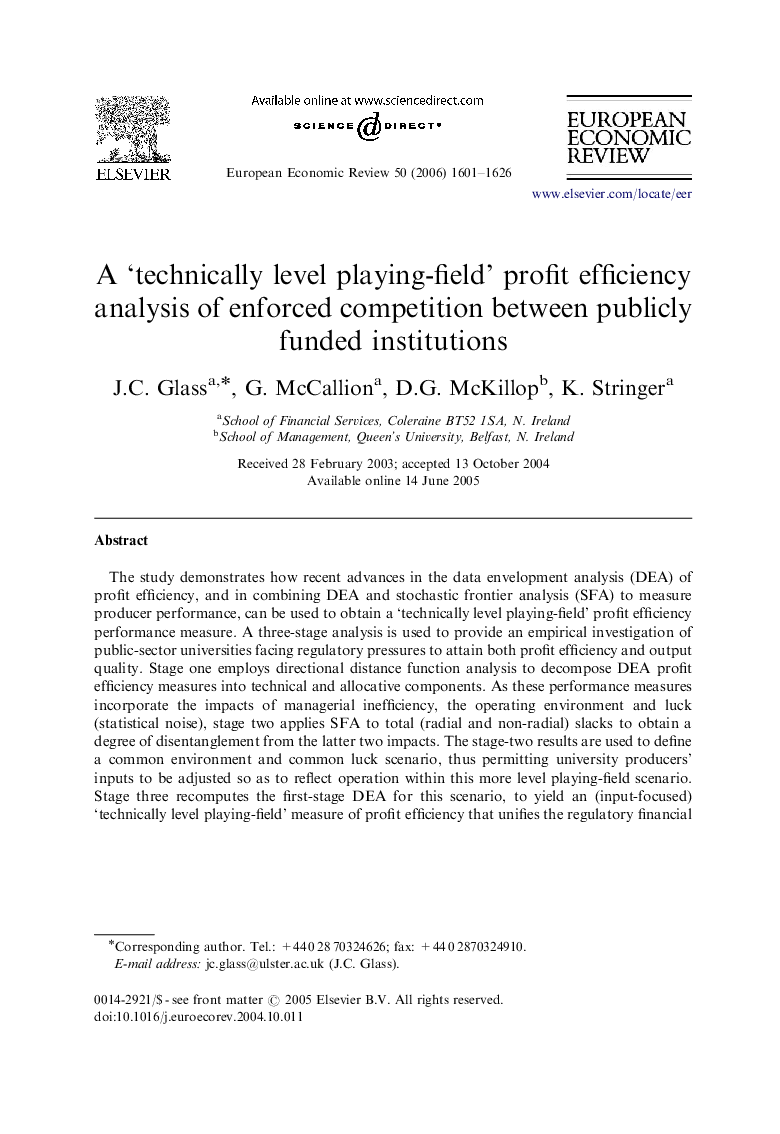| Article ID | Journal | Published Year | Pages | File Type |
|---|---|---|---|---|
| 5067694 | European Economic Review | 2006 | 26 Pages |
The study demonstrates how recent advances in the data envelopment analysis (DEA) of profit efficiency, and in combining DEA and stochastic frontier analysis (SFA) to measure producer performance, can be used to obtain a 'technically level playing-field' profit efficiency performance measure. A three-stage analysis is used to provide an empirical investigation of public-sector universities facing regulatory pressures to attain both profit efficiency and output quality. Stage one employs directional distance function analysis to decompose DEA profit efficiency measures into technical and allocative components. As these performance measures incorporate the impacts of managerial inefficiency, the operating environment and luck (statistical noise), stage two applies SFA to total (radial and non-radial) slacks to obtain a degree of disentanglement from the latter two impacts. The stage-two results are used to define a common environment and common luck scenario, thus permitting university producers' inputs to be adjusted so as to reflect operation within this more level playing-field scenario. Stage three recomputes the first-stage DEA for this scenario, to yield an (input-focused) 'technically level playing-field' measure of profit efficiency that unifies the regulatory financial audit and output-quality indicators in a single, best-practice-benchmarked, performance measure.
